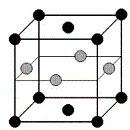Department of Physics and Astronomy: Publications and Other Research

Ralph Skomski Publications
Document Type
Article
Date of this Version
2012
Citation
Nanoscale, 2012, 4, 7704–7711; DOI: 10.1039/c2nr32858e
Abstract
A main challenge in understanding the defect ferromagnetism in dilute magnetic oxides is the direct experimental verification of the presence of a particular kind of defect and distinguishing its magnetic contributions from other defects. The magnetic effect of hydroxyls on TiO nanoclusters has been studied by measuring the evolution of the magnetic moment as a function of moisture exposure time, which increases the hydroxyl concentration. Our combined experiment and density-functional theory (DFT) calculations show that as dissociative water adsorption transforms oxygen vacancies into hydroxyls, the magnetic moment shows a significant increase. DFT calculations show that the magnetic moment created by hydroxyls arises from 3d orbitals of neighboring Ti sites predominantly from the top and second monolayers. The two nonequivalent hydroxyls contribute differently to the magnetic moment, which decreases as the separation of hydroxyls increases. This work illustrates the essential interplay among defect structure, local structural relaxation, charge redistribution, and magnetism. The microscopic differentiation and clarification of the specific roles of each kind of intrinsic defect is critical for the future applications of dilute magnetic oxides in spintronic or other multifunctional materials.


Comments
Copyright 2012 The Royal Society of Chemistry. Used by permission.